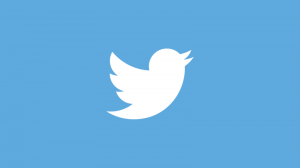As publishers face the challenges of a cross-device world, they need to embrace emerging technologies and remember to look toward actual human teams for solutions, says columnist Hagai Tal.

Today’s technology landscape is constantly shifting, as new devices are created to answer modern consumer needs and infrastructures are created to support the use of those tools in both the consumer and business worlds. With every device and channel that emerges comes a new opportunity to reach and engage consumers with advertising content.
There is an abundance of new platforms and solutions that promise ways to maximize impressions and traffic, and of course, publishers want to take advantage of the opportunities. These opportunities, however, do not come without obstacles.
Publishers are already faced with the daunting task of answering the demands of users who want to switch between devices without any interruption or inconsistency in their content and advertising experiences, while maximizing their own revenue. The big problem is, publishers have no way of knowing which opportunities hold the most revenue potential.
The modern digital landscape is multi-channel by default, comprising three main advertising ecosystems: display, video and mobile.
Each of these contain different advertising tools, platforms and reporting systems, and publishers must work within them all to meet the needs of their advertising partners. But they have no real visibility into which channel is going to generate the highest cost per impression. They have to connect to several different systems but don’t have the ability, in real time, to make decisions about which ads to serve in order to gain the highest return.
Don’t Ignore One Channel
Publishers have the best chance of maximizing their revenue if they cover all three of the ecosystems. Today’s publisher market is extremely crowded, and publishers are competing for a smaller number of high-return ad opportunities.
For instance, video ads tend to generate the highest cost per impression, but the demand for video inventory from quality advertisers falls well short of the supply.
Sticking only with video would leave the publisher with a lot of unfilled inventory, so it would be necessary to supplement with display campaigns to maximize fill rate. No matter the perceived cost or headache of integration, ignoring any one channel is leaving a significant amount of money on the table.
This broad coverage is vital to an effective monetization strategy; the more relationships a publisher can cultivate with the major portals and data providers, the more opportunities that publisher has to take advantage of the targeted ad impressions that generate higher returns.
It is advisable for publishers of all sizes to ensure that they have a pipeline to first-party data from the major players like Google, Twitter and Facebook to preserve comprehensive channel coverage.
Currently, there is no single tool that enables publishers to manage display, mobile and video simultaneously or provides the up-to-date insight from each channel they need to make those real-time decisions. Publishers can, however, implement technology to connect each of the ecosystems to measure results and gain insight into the performance of each in order to inform future monetization decisions.
Don’t Overlook Your Team
With all this talk of technology, it can be easy to overlook the importance of your actual human team when it comes to identifying and answering opportunities to boost revenue.
Most platforms are equipped with, or connected to, some kind of measurement system that can churn out performance data — but that data can only be turned into real insight by a team applying analytics to identify patterns, areas of success, gaps in coverage and more.
So publishers should make the appropriate investments in technology and not only trust their teams to conduct A/B testing and other data analysis but also provide them with the infrastructure and support they need to do so.
Publishers face myriad challenges when it comes to reinventing themselves in a cross-device world, but being flexible and ready to adapt to emerging devices and technologies will be the best thing they can do to maximize their revenue.
Third-party platforms have their own interests in mind; they’re optimizing for their own revenues, so publishers have to empower themselves with the tools and information they need to answer the demands of a rapidly evolving market.
Some opinions expressed in this article may be those of a guest author and not necessarily Marketing Land. Staff authors are listed here.
(Some images used under license from Shutterstock.com.)
Marketing Land – Internet Marketing News, Strategies & Tips
(110)










